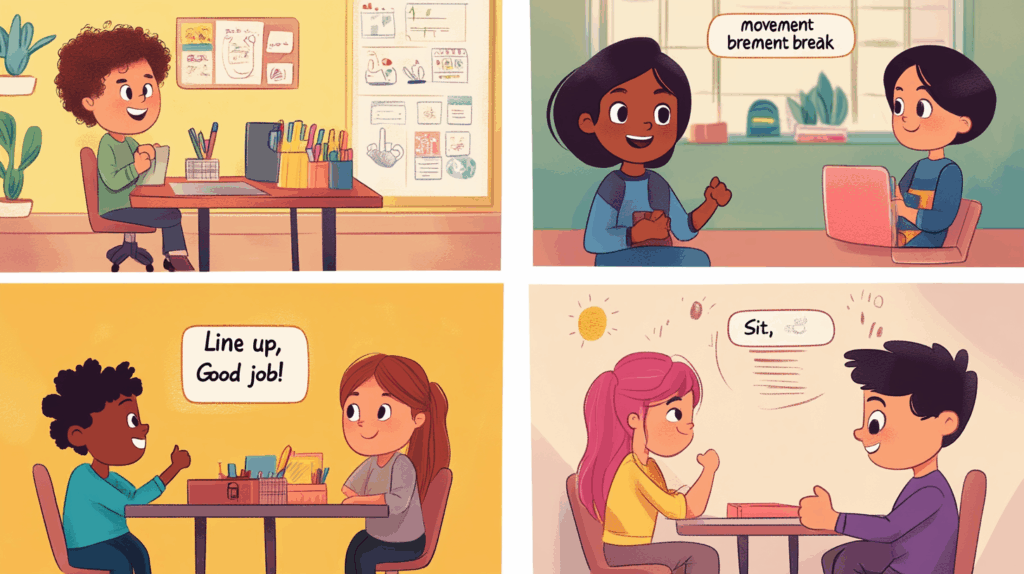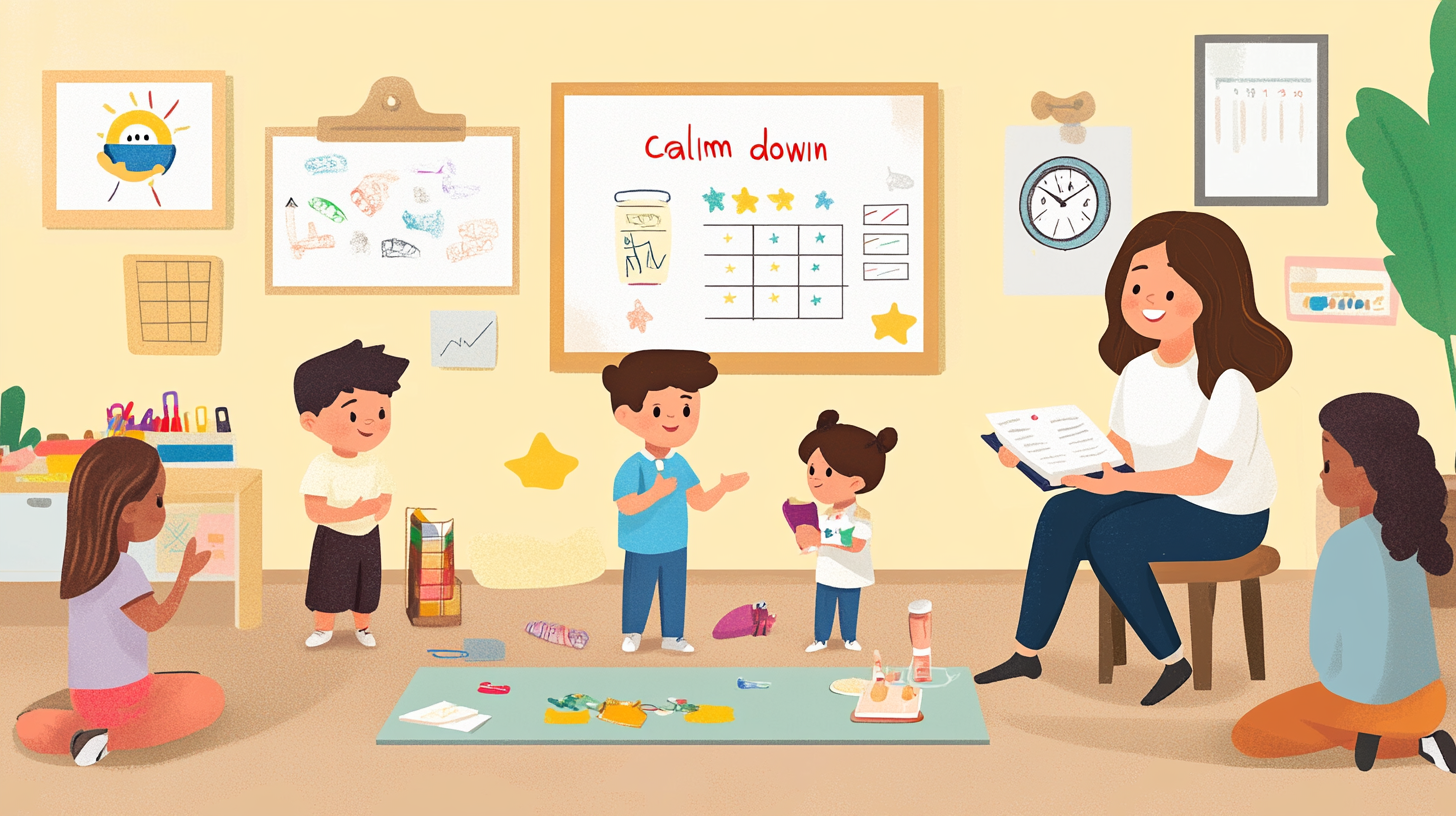Do you have a student whose actions keep getting in the way of learning? You’re not alone. Many teachers face this daily struggle.
Behavior plans for elementary students can turn this around. These step-by-step guides help both you and your students succeed.
In this blog, we’ll walk through everything you need to know about making behavior plans that work. You’ll learn how to spot when a student needs help, which type of plan to use, and how to build one from scratch.
We’ll also cover ways to track progress and adapt plans for different needs. With the right plan, even the most challenging behaviors can improve.
Ready to create calm in your classroom? Let’s get started.
When and Why to Use Behavior Plans
You should use behavior plans when a student shows ongoing behavior issues that don’t respond to normal classroom rules. These plans are most effective for recurring issues rather than one-time events.
Why use a formal behavior plan? Here are the reasons:
- It brings structure and clear steps to solve tough behavior issues
- It helps all adults respond the same way, which cuts down on mixed messages
- It gives students the chance to learn better ways to act and cope with problems
- It creates a record of what works and what doesn’t, so you can make smart changes
Common Behavior Plans Used in Elementary Settings
You have several options when choosing a behavior plan format. Each type serves a different purpose and fits various situations. The right choice depends on how many students need help and how serious the behaviors are.
Individual Behavior Plans (IBPs): These plans focus on one student and address specific behaviors that need improvement. IBPs work well for minor to moderate issues that don’t need formal special education services. They include basic strategies that classroom teachers can manage with some support from the school team.
Behavior Intervention Plans (BIPs): These are more formal plans often linked to special education services. A BIP follows a full assessment of the behavior’s causes. It contains very specific steps for teachers and staff to follow. These plans are often required when behaviors are serious or when a student has an IEP.
Class-wide behavior systems: These plans help manage the behavior of all students in your class at once. They set clear rules and rewards that apply to everyone. Class-wide systems often use group goals, team points, or whole-class rewards. They work best to create a positive classroom culture and address minor behavior issues.
Tiered supports under MTSS or PBIS: This approach offers different levels of help based on student needs. Tier 1 includes good teaching for all students. Tier 2 gives extra help to small groups with similar needs. Tier 3 provides intense, one-on-one support for students with the most serious behavior problems.
How to Build an Effective Behavior Plan

Creating a good behavior plan doesn’t have to be hard. With the right steps, you can make a plan that really works for students who need extra help with their actions.
Step 1 – Define the Behavior Clearly
You need to start with a clear picture of what needs to change. Focus on behaviors you can see and count.
When you write down a behavior, be very exact. Don’t say “John is disruptive.” Instead, say “John talks without raising his hand 12 times per class.”
This helps you track real progress. You can’t fix a problem if you can’t explain it well. Ask yourself: “What does this behavior look like?” and “How often does it happen?” Clear definitions lead to better plans.
Step 2 – Identify Triggers and Motivators
Look for what sets off the behavior. Pay close attention to when and where it happens.
You might notice the student acts out during math class, right before lunch, or when asked to work in groups. Write down all possible causes. Some might be linked to the room setup, noise level, hunger, or even lack of sleep.
Talk with the student to find out what they want or need from the behavior. Students often act out to get attention, avoid work, or deal with stress. Finding these reasons will help you make better fixes.
Step 3 – Set Positive and Realistic Goals
Good goals focus on what you want to see, not just what you want to stop.
Instead of “stop running in the hall,” try “walk in the hall 90% of the time.” Make sure goals match the student’s age and skills. Start with small wins that build confidence.
Break big goals into smaller steps. For example, if a student needs to stay in their seat, first aim for 10 minutes, then 20, then a full class period. Always praise effort, not just results.
Step 4 – Choose Strategies and Interventions
Pick methods that fit the student’s needs and the reasons behind their actions.
You might use reward charts, special breaks, or a quiet corner for cooling down. Think about what has worked before. Some students do well with daily check-ins, while others need reminders or visual cues on their desks.
Try offering choices when possible. This gives students some control. Keep your tone calm and kind, even when the behavior is tough to handle.
Step 5 – Plan for Monitoring and Feedback
Track progress so you can see what’s working and what needs to change.
Use simple tools like tally marks, charts, or daily notes. Make sure to note both good and bad days. Meet with the student often to talk about how things are going.
Ask them what they think is helping. When you see signs of progress, point them out right away. Even small steps forward should be noted. Be ready to change parts of the plan that aren’t working.
Step 6 – Communicate with Stakeholders
A team approach makes your plan much stronger.
Share the plan with parents, other teachers, and support staff. Everyone should know their role. Hold regular update meetings, even short ones. Send home good news, not just problems.
Listen to input from all team members. The student should also have a say in the plan when possible. Working together creates a support network that helps the student succeed in all settings.
Tips for Successful Implementation
Even the best behavior plan needs the right approach to work well. These tips will help you put your plan into action and get results that last.
Be Consistent but Flexible
Stick to your plan every day, but be ready to make changes when needed. Students count on adults to follow through. Use the same words and actions each time the behavior happens.
This helps students learn what to expect. At the same time, watch for signs that parts of the plan aren’t working. Not every day will be the same.
Some days might be harder due to a lack of sleep or problems at home. Make small tweaks when needed, but keep the main parts of the plan in place.
Make It Visual and Engaging for Kids
Most students respond better to plans they can see and touch. Try using colorful charts, fun stickers, or a special chart on the student’s desk.
Many kids love moving clips up a ladder or adding stickers to a goal sheet. Younger students might like cartoon faces showing different emotions.
Older students often prefer more grown-up tracking tools like point systems or digital apps. The more a student likes the tools, the more they’ll want to use them.
Track and Celebrate Small Wins
Notice and point out each step of progress, no matter how small. When you see good choices, say so right away. Be clear about what you liked: “I noticed you raised your hand three times today!”
Keep a record of these wins to show growth over time. Think of fun, simple ways to mark big steps forward.
This might be a special job in class, extra time with a friend, or a note home about the good day. Celebrations don’t need to be big – just meaningful to the student.
Adapting Behavior Plans for Different Student Needs

Not all behavior plans work the same for every student. You’ll need to adjust your methods based on each child’s unique needs, strengths, and the reasons behind their actions.
ADHD or attention issues: Focus on movement breaks, clear time limits, and visual reminders to help students stay on task.
Autism spectrum behaviors: Use clear routines, visual supports, and sensory tools to help with changes and social skills.
Emotional or trauma-based behaviors: Build trust first, teach feeling words, and create safe spaces for when big feelings happen.
Language delays or learning disabilities: Keep instructions simple, use pictures with words, and check often for understanding.
The most important thing is to match your plan to the student’s specific needs. Watch how they respond and make changes as needed. Ask for help from school experts like counselors or special education teachers when you feel stuck.
Wrapping Up
When done right, these plans can change how a child acts at school and how they feel about learning. The key is to start small, be patient, and work as a team.
Try starting with just one student who needs the most help. Focus on one behavior at a time. Write down what happens each day, even if progress is slow.
Share good news with parents as often as you share concerns. Remember that all behavior has a reason behind it.
Ready to try? Start by watching your class for three days. Note which students might need extra help. Then pick one strategy from this guide and put it into action.
With each small step, you’ll build a more peaceful classroom where all students can learn.




